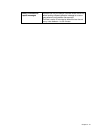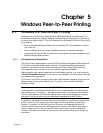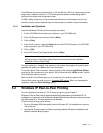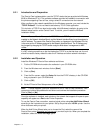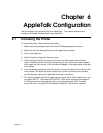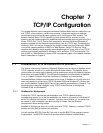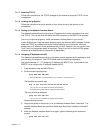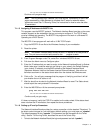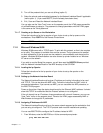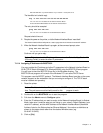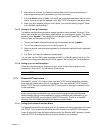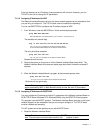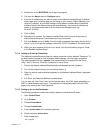
Chapter 7 - 1
Chapter 7
TCP/IP Configuration
This chapter explains how to configure the Network Interface Board and your network for use
with TCP/IP communication in various environments. Independent setup and installation
procedures are provided for Windows systems and for most popular UNIX systems. The
Network Interface Board TCP/IP capability will also operate with lpr spoolers on other
systems, and with spooler/supervisor capabilities that communicate raw print jobs to the Print
Server TCP/IP Port. The IP Peer-to-Peer redirector for Windows 95/98 and Windows NT
systems, provided with the Network Interface Board, uses this TCP/IP port. The default port
number is 10001, but may be changed to any desired number using the Telnet utility, SNMP,
or the HTML pages accessible via MAP or a Web Browser. Section 7.5 Running Telnet,
describes the interactive setup capability accessible through the Telnet utility on any TCP/IP
platform, and is equally applicable to Windows, UNIX, and other TCP/IP environments. The
use of MAP or a Web Browser to access HTML management pages in the Network Interface
Board is described in Chapter 3.
7.1 Installation in a Windows Environment
The several versions and variations of Microsoft Windows may be used on a NetWare and/or
TCP/IP networks, as well as in a native Microsoft Windows network. This flexibility allows
various options for setting up the network printing system even though this Network Interface
Board does not support NetBEUI. If the Windows workstations are connected to a NetWare
3.x or 4.x network, configure the printer interfaces for NetWare, and use standard
Windows/NetWare utilities to provide access to the printer. If NetWare is not to be used, the
users may access the printer using TCP/IP. Windows 95/98 and Windows NT 4.0 users can
also use the Network Interface Board Peer-to-Peer capability as described in Chapter 5. The
following sections describe installation using TCP/IP under Windows for Workgroups,
Windows 95/98, and Windows NT.
7.1.1 Windows for Workgroups
Printing with TCP/IP requires that the workstation have TCP/IP capability and the
corresponding spooler, lpr; or that the workstation can share an lpr queue on a Windows NT
server (for example) that has one. In general, if printers are not shared, an lpr queue must
be created on each workstation from which printing is initiated. See the Windows
documentation about sharing printers.
Windows for Workgroups does not normally come with TCP/IP. However, a variety of TCP/IP
facilities and third party lpr spoolers are available.
You will need the BOOTPL16.exe file if you wish to use the BOOTP Lite program to set up
IP parameters. The BOOTPL16.exe file is provided with the Network Interface Board.



